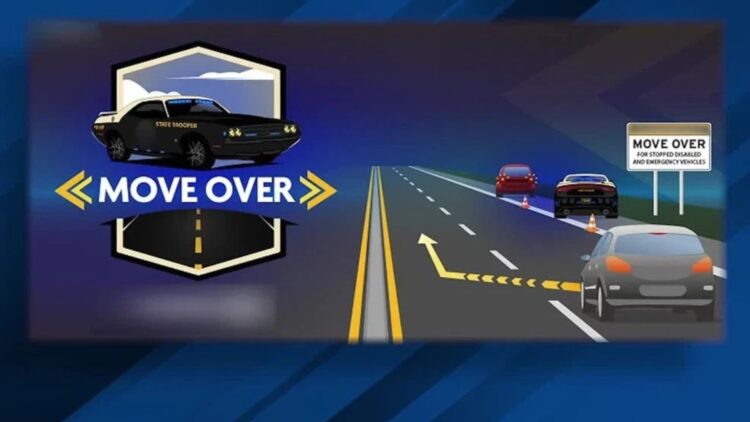Since September 3, 2025, the Nebraska Department of Transportation has implemented a series of changes to traffic laws aimed at increasing safety on Nebraska’s roads, as indicated by the director of the Department of Transportation, Vicki Kramer. Until now, there had been the Move Over Law, which only applied to emergency and roadside assistance vehicles. However, it has been expanded under Legislative Bill 530, which includes all vehicles stopped for cyclists and pedestrians.
This new law requires drivers to reduce their speed and change lanes when approaching any vehicle that is on the side of the road. It applies to both highways and Interstate 80. This measure arises as a necessity to alleviate the increase in the number of speeding traffic tickets. Several states have taken measures for the same reasons, such as Indiana, which has raised the speed limit on roads, or Minnesota, where a specific lane for cyclists has been established.
Move Over Law
Since September 3, 2025, an expansion of the previously existing Move Over Law has come into effect on the roads of Nebraska. This initiative has been driven by the Nebraska Department of Transportation, which is installing new signage on the roads. According to the director of the Department of Transportation, Vicki Kramer, the aim of this law reform is to enhance road safety and reduce the number of traffic fines for speeding.
Until now, the Move Over Law only affected emergency and roadside assistance vehicles. However, Legislative Law 530 includes all stopped vehicles and those considered ‘vulnerable users,’ meaning pedestrians and cyclists. What does this new law require? It requires all drivers to reduce speed and change lanes when approaching any vehicle stopped on the side of the road. Its implementation affects all highways, including Interstate 80.
Changes in traffic legislation after 30 years
This modification represents an almost unusual fact in the state, as no changes in traffic regulations had occurred since 1996. Why now? The figures for traffic fines for speeding have significantly increased, which has necessitated a tightening of the consequences, aligned with the seriousness of the violation. From now on, the fines will be as follows:
- 1–5 mph over the limit: $50 (up from $10).
- 6–10 mph over: $75 (up from $25).
- 11–15 mph over: $125 (up from $75).
- 16–20 mph over: $200 (up from $125).
- 21–35 mph over: $300 (up from $200).
- 36+ mph over: $400 (up from $300).
Structural changes
This amendment to the law not only affects the amounts of fines but also represents a much greater structural change. On one hand, the term ‘reckless driving’ has been mentioned and included for the first time, referring to those individuals who exceed the safety limit. Other aspects to consider are:
- Class IV crime. It occurs when dangerous driving results in vehicular homicide and carries a severe penalty.
- In case of bad weather and other hazards, the NDOT is used to temporarily reduce speed limits.
- A policy for variable speed zones is in place to protect drivers and road users.
These reforms aim to ensure safety on the state’s roads, as explained by Vicki Kramer, the director of NDOT. Authorities have declared the need to tighten these measures due to the significantly notable increase in fines for traffic violations. They claim that this is a preventive measure, but it requires participation from drivers, who must do their part and comply with the legislation.
Other states join in
Nebraska is not the only state that has implemented reforms in its legislative framework. Others like Indiana have also been forced to raise the speed limit on roads, moving away from 55 MPH. On the other hand, in the state of Minnesota, due to the lane filtering law, they have a specific lane for cyclists, thereby reducing the danger of accidents.
Maryland toughens penalties for speeding, including jail sentences.
